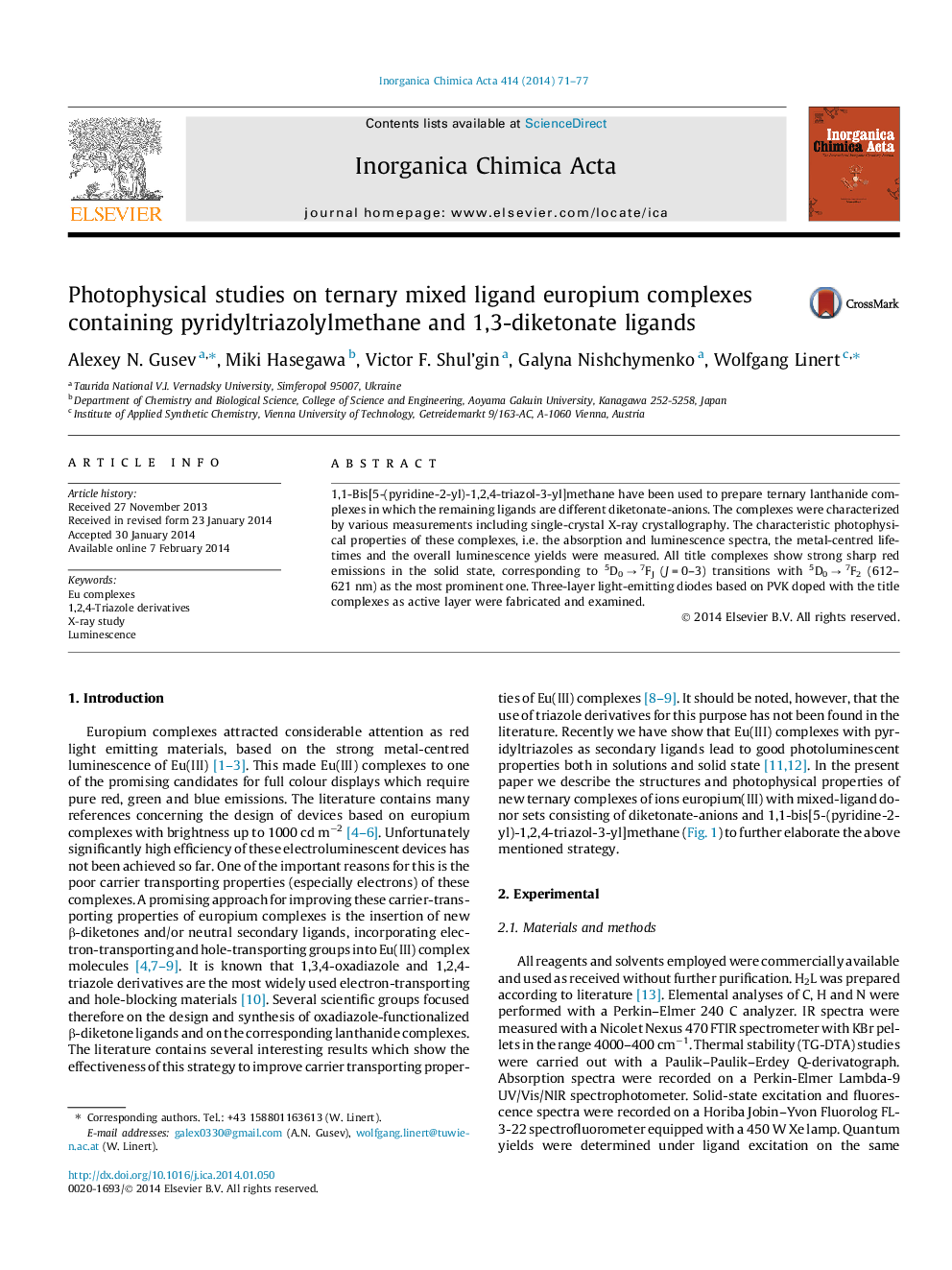| Article ID | Journal | Published Year | Pages | File Type |
|---|---|---|---|---|
| 1305666 | Inorganica Chimica Acta | 2014 | 7 Pages |
•New Eu(III) complex using bistriazole ligands were fully characterized both structural and optical meaning.•Luminescent properties are studied and discussed.•Two new OLED devices are created and characterized.
1,1-Bis[5-(pyridine-2-yl)-1,2,4-triazol-3-yl]methane have been used to prepare ternary lanthanide complexes in which the remaining ligands are different diketonate-anions. The complexes were characterized by various measurements including single-crystal X-ray crystallography. The characteristic photophysical properties of these complexes, i.e. the absorption and luminescence spectra, the metal-centred lifetimes and the overall luminescence yields were measured. All title complexes show strong sharp red emissions in the solid state, corresponding to 5D0 → 7FJ (J = 0–3) transitions with 5D0 → 7F2 (612–621 nm) as the most prominent one. Three-layer light-emitting diodes based on PVK doped with the title complexes as active layer were fabricated and examined.
Graphical abstract1,1-Bis(5-(pyridine-2-yl)-1,2,4-triazol-3-yl)methane have been used to prepare ternary lanthanide complexes in which the remaining ligands are various diketonates anions. The main photophysical characteristics of these complexes, i.e. the absorption and luminescence spectra, the metal-centred lifetimes and the overall luminescence yields were measured. Three-layer light-emitting diodes based on PVK doped with title complexes as an active layer were fabricated and investigated.Figure optionsDownload full-size imageDownload as PowerPoint slide
